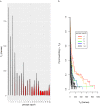Canonical Cortical Circuit Model Explains Rivalry, Intermittent Rivalry, and Rivalry Memory
- PMID: 27138214
- PMCID: PMC4854419
- DOI: 10.1371/journal.pcbi.1004903
Canonical Cortical Circuit Model Explains Rivalry, Intermittent Rivalry, and Rivalry Memory
Abstract
It has been shown that the same canonical cortical circuit model with mutual inhibition and a fatigue process can explain perceptual rivalry and other neurophysiological responses to a range of static stimuli. However, it has been proposed that this model cannot explain responses to dynamic inputs such as found in intermittent rivalry and rivalry memory, where maintenance of a percept when the stimulus is absent is required. This challenges the universality of the basic canonical cortical circuit. Here, we show that by including an overlooked realistic small nonspecific background neural activity, the same basic model can reproduce intermittent rivalry and rivalry memory without compromising static rivalry and other cortical phenomena. The background activity induces a mutual-inhibition mechanism for short-term memory, which is robust to noise and where fine-tuning of recurrent excitation or inclusion of sub-threshold currents or synaptic facilitation is unnecessary. We prove existence conditions for the mechanism and show that it can explain experimental results from the quartet apparent motion illusion, which is a prototypical intermittent rivalry stimulus.
Conflict of interest statement
The authors have declared that no competing interests exist.
Figures











Similar articles
-
How does binocular rivalry emerge from cortical mechanisms of 3-D vision?Vision Res. 2008 Sep;48(21):2232-50. doi: 10.1016/j.visres.2008.06.024. Epub 2008 Aug 13. Vision Res. 2008. PMID: 18640145 Review.
-
Computational evidence for a rivalry hierarchy in vision.Proc Natl Acad Sci U S A. 2003 Nov 25;100(24):14499-503. doi: 10.1073/pnas.2333622100. Epub 2003 Nov 11. Proc Natl Acad Sci U S A. 2003. PMID: 14612564 Free PMC article.
-
Minimal physiological conditions for binocular rivalry and rivalry memory.Vision Res. 2007 Sep;47(21):2741-50. doi: 10.1016/j.visres.2007.07.007. Epub 2007 Aug 30. Vision Res. 2007. PMID: 17764714
-
Competition with and without priority control: linking rivalry to attention through winner-take-all networks with memory.Ann N Y Acad Sci. 2015 Mar;1339(1):138-53. doi: 10.1111/nyas.12575. Epub 2015 Jan 7. Ann N Y Acad Sci. 2015. PMID: 25581077 Free PMC article.
-
Neural circuit models for computations in early visual cortex.Curr Opin Neurobiol. 2011 Oct;21(5):808-15. doi: 10.1016/j.conb.2011.07.005. Epub 2011 Aug 26. Curr Opin Neurobiol. 2011. PMID: 21873046 Review.
Cited by
-
Auditory streaming emerges from fast excitation and slow delayed inhibition.J Math Neurosci. 2021 May 3;11(1):8. doi: 10.1186/s13408-021-00106-2. J Math Neurosci. 2021. PMID: 33939042 Free PMC article.
-
Dynamical modeling of multi-scale variability in neuronal competition.Commun Biol. 2019 Aug 23;2:319. doi: 10.1038/s42003-019-0555-7. eCollection 2019. Commun Biol. 2019. PMID: 31453383 Free PMC article.
-
Methods to assess binocular rivalry with periodic stimuli.J Math Neurosci. 2020 Jun 15;10(1):10. doi: 10.1186/s13408-020-00087-8. J Math Neurosci. 2020. PMID: 32542516 Free PMC article.
-
Changes in low-level neural properties underlie age-dependent visual decision making.Sci Rep. 2018 Jul 17;8(1):10789. doi: 10.1038/s41598-018-27398-x. Sci Rep. 2018. PMID: 30018453 Free PMC article.
-
Ensemble modeling of auditory streaming reveals potential sources of bistability across the perceptual hierarchy.PLoS Comput Biol. 2020 Apr 10;16(4):e1007746. doi: 10.1371/journal.pcbi.1007746. eCollection 2020 Apr. PLoS Comput Biol. 2020. PMID: 32275706 Free PMC article.
References
-
- Leopold DA, Logothetis NK. Activity changes in early visual cortex reflect monkeys’ percepts during binocular rivalry. Nature. 1996;379: 549–553. - PubMed
-
- Leopold DA, Maier A, LN K. Measuring Subjective Visual Perception in the Nonhuman Primate. J Conscious Stud. 2003;10.
-
- Tong F, Meng M, Blake R. Neural bases of binocular rivalry. Trends Cogn Sci. 2006;10: 502–511. - PubMed
-
- Blake R, Logothetis NK. Visual competition. Nat Rev Neurosci. 2002;3: 13–21. - PubMed
Publication types
MeSH terms
LinkOut - more resources
Full Text Sources
Other Literature Sources

